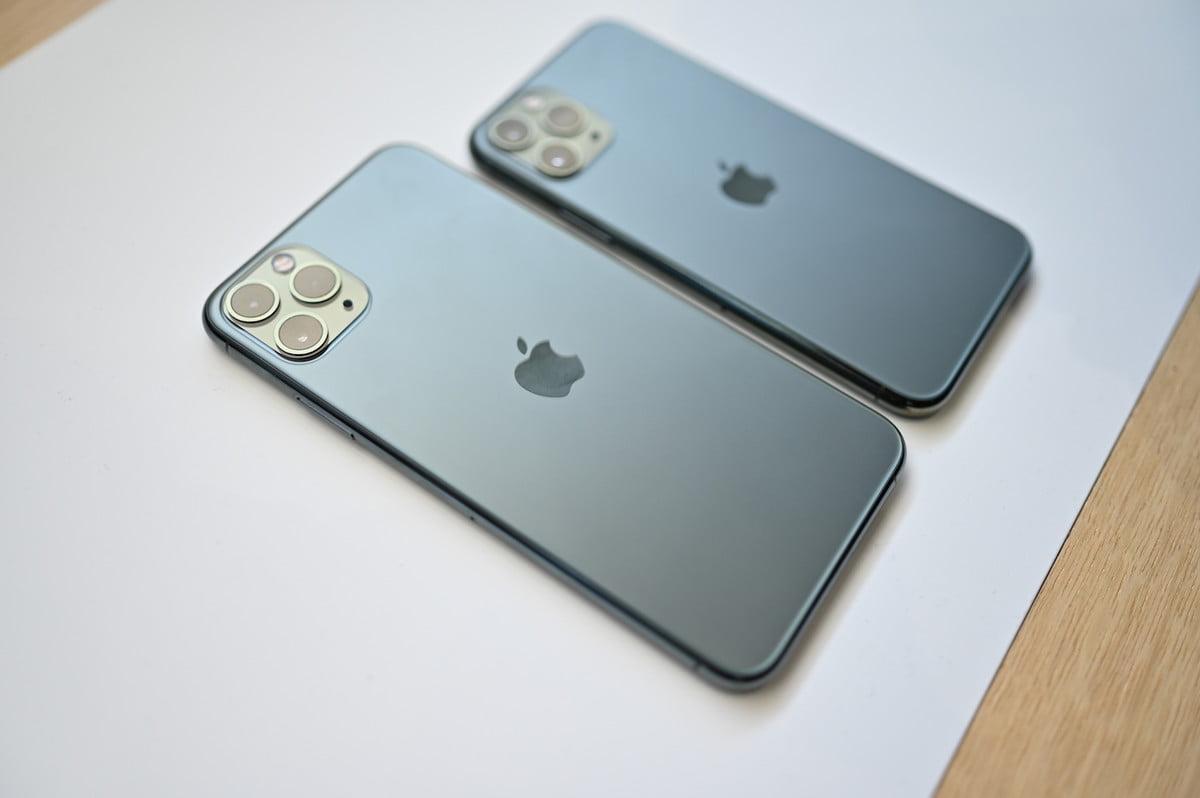

Boring. Iterative. Ugly. Sexy. Exciting. Dominant. Since Apple’s September launch event, we’ve heard it all about the latest flagships from Apple, the iPhone 11 Pro and iPhone 11 Pro Max. Substantial changes have been made to the hardware and cutting-edge features introduced in the software.
There’s a lot to unpack, so let’s break down which of these features are worthy of our praise and those that rightfully draw ire.
The best features on the iPhone 11 Pro and Pro Max
Updated cameras with cutting-edge software

While the aesthetics of the camera module are the cause of much debate (mostly distaste), the hardware and software upgrades here bring the iPhone’s camera system up to speed with the industry, and potentially even surpasses it.
The addition of an ultra-wide-angle lens complements the standard and telephoto lenses, offering the versatility of capturing large landscapes with stunning breadth, while still offering 2x optical zoom for detailed close-ups. Phones like the LG V50, Huawei P30 Pro, and Samsung’s Galaxy Note 10 and S10 offer triple-camera systems already, so it’s great to finally have this versatility in an iPhone. At last, iPhone owners won’t have to feel like another phone’s camera could capture more.
Speaking of capturing more, Night mode is another feature that has been hotly anticipated ever since Google first showed the world what stunning work can be done with Night Sight on the Pixel 3 last year, and a number of manufacturers have stepped up with their own variations in the interim. Apple’s version tuns on automatically feature, and it compiles a series of images taken with varying exposures, optimizing the final product for reduced motion and blur.
Akin to this is another software trick that could put the iPhone 11 devices ahead of the competition, called Deep Fusion. This also uses a series of images to compose a single photo but adds in dedicated pixel-by-pixel analysis via the Neural Processing Unit (NPU) to squeeze out exquisite detail and coloring in low-light photos. This won’t be available until later this year via a software update.
Apple has always done impressive work with HDR and image processing, and even with Google’s Pixel 4 around the corner, it’s poised to potentially be the best phone camera of the year.
New video features: Slofies and QuickTake

I know. It’s a terribly stupid name that only Apple could pull off, but it’s a feature I’m looking forward to trying out. iPhones have been able to take slow-motion 120 fps video on the rear camera for some time; it’s fun and useful for specific moments, but frankly, it will be even more fun to capture a short slow-motion moment of yourself or you with your friends. Like a good Snapchat filter, Slofies are about to become a very real and fun part of your life.
QuickTake is another one of the features I’m most excited about. Almost no one takes burst photos on purpose, so nixing this feature in favor of a shortcut to immediately start video recording will be a very welcome change. No more swiping to video mode, waiting for the half-second it takes to load, then tapping the record button to capture video when a moment arises. I can’t tell you how many moments I’ve missed switching to video and quickly tapping the record button only to realize later that the lag in switching modes prevented my tap to record from registering, thereby missing not just the moment I wanted but the entire recording. I can’t wait to snap into a video recording via a seamless long-press of the shutter button.
Better battery life, bundled with an 18-watt fast charger

The iPhone 11 Pro lasts four hours more than the iPhone XS, and the iPhone 11 Pro Max lasts five hours more than the iPhone XS Max. That’s a lot of extra time to gain on a phone. This appears to have been achieved through a mixture of software and hardware optimizations along with small changes to the size and weight of the phones, ostensibly to accommodate a larger battery.
We’re looking at only an 11-gram increase (about half an ounce) with mere hundredths of an inch increases to thickness, length, and width over the predecessors. In other words, it’ll be pretty hard to tell a difference in size and weight, but usage time increases should be tangible, perhaps pushing into a second day if used lightly.
Finally, there’s a fast-charging cable and brick in the box to speed up the dismal charging speeds delivered by the 5-watt adapters of old.
The worst features on the iPhone 11 Pro and Pro Max
An ugly camera cluster

At the time of publication, “define trypophobia” is the sixth highest search term when you type “define” into Google. I’m not saying the iPhone 11 Pro phones are responsible for it, but they aren’t helping. Defined as “an intense emotional reaction to clustered patterns of holes or bumps” on Dictionary.com, it’s clear that the iPhone 11 Pro’s camera cluster, specifically the choice to highlight each lens with the colored background of the iPhone rather than blacking out the cluster as other manufacturers have, is bothering a lot of people.
Phobias aside, it’s not very aesthetically pleasing to raise and highlight three large metal and glass circles on the back of a phone, nevermind how prone it will be to scratching because it’s not flush. HMD Global placed five cameras flush on the back of the Nokia 9 PureView, so Apple certainly could’ve figured out how to better integrate three.
The face of a two-year-old

Two-year-old faces are usually cute in the context of living things. Smartphones? Not nearly as much. It has been almost two full years now that we’ve dealt with the notch and it’s time for it to go, or at least shrink. The same goes for these thicker bezels. I, like many, got used to the iPhone’s notch and bezels since the iPhone X and found them largely inconsequential to the user experience. But nearly two years have passed, and every other manufacturer is increasing its screen-to-body ratios substantially and ridding devices of notches. Looking at the Galaxy Note 10 and Note 10 Plus, you can easily get lost in the infinity pool that is the screen. Looking at the iPhone 11 Pro, you can easily get lost and think you’re looking at a two-year-old phone.
No USB-C, unlike the iPad Pro

Apple’s “Pro” moniker used to cater to the creatives and business professionals who need professional-level tools with the best specs and the latest standards. USB-C is the newest and best standard for power and data transfer on mobile devices and if you look at a MacBook Pro or iPad Pro, you’ll see that Apple is well aware of this. Despite that fact, in the introduction of the first iPhone “Pro” model, we’re missing this fast and universal port.
This would have been an excellent time to make the jump; it’s going to happen eventually. Sorry pros, but you’ll be using iPhone specific connections for at least another year.
Expectations are still high
The iPhone 11 Pro and 11 Pro Max aren’t the best-looking devices. Apple always is hit-or-miss with design on a year-to-year basis lately, but the matte textured glass is a great look despite some of the Pros other aesthetic foibles.
What has remained consistent in iPhones is software dominance, hardware that holds up, and an ecosystem that supports it. Now adding cutting-edge photography features to its already solid photography prowess, the iPhone is back at the forefront of mobile imagery while the substantially longer battery life brings something tangible that every phone owner wants.
- Where to buy the new Apple iPhone 11, iPhone 11 Pro, and iPhone 11 Pro Max
- iPhone 11 Pro and 11 Pro Max: Everything you need to know
read more at https://www.digitaltrends.com by Corey Gaskin
Tech







